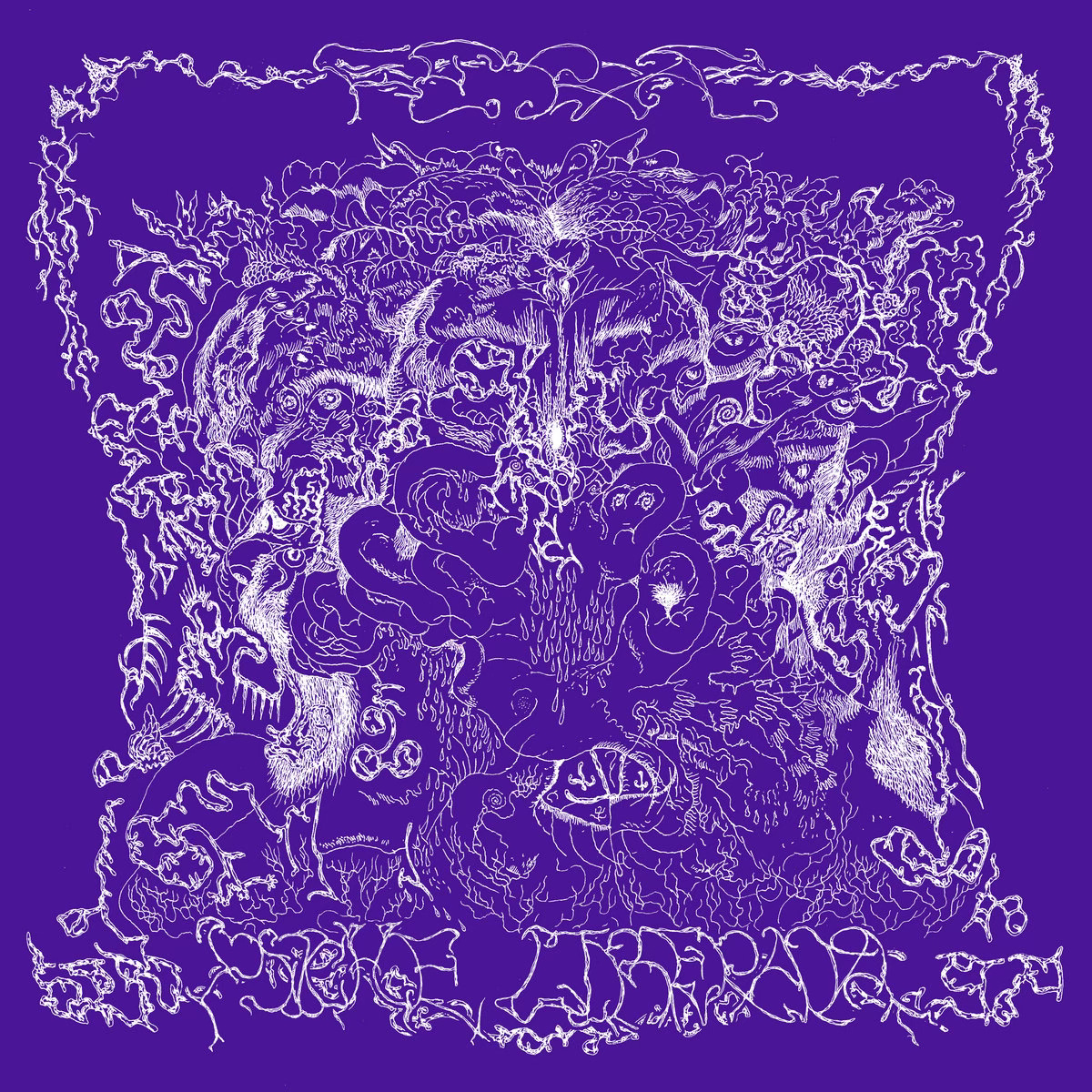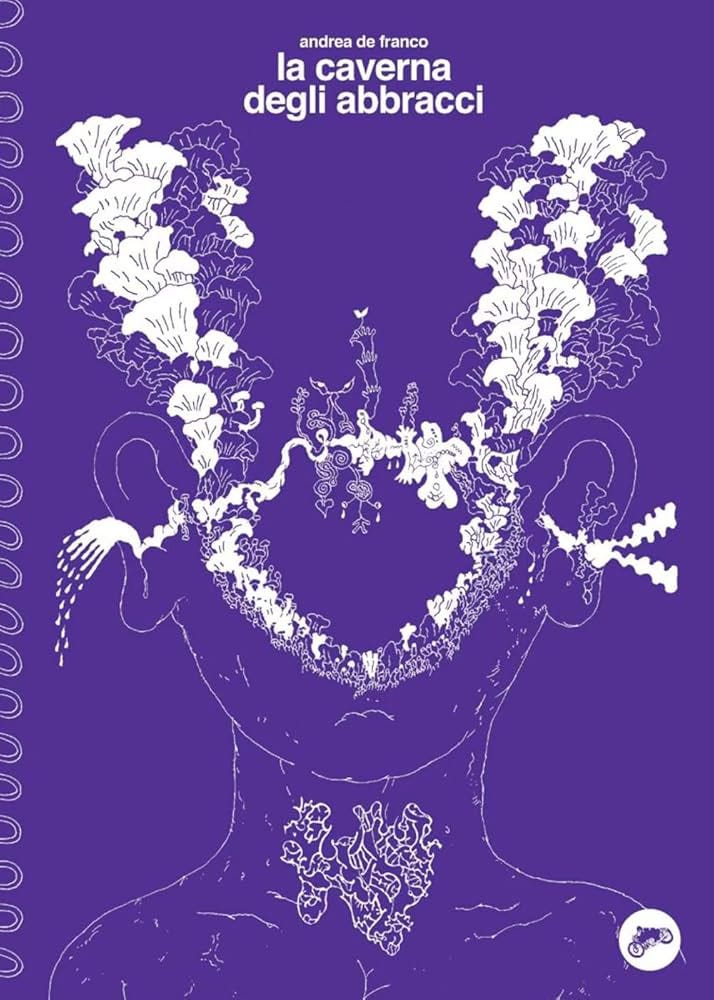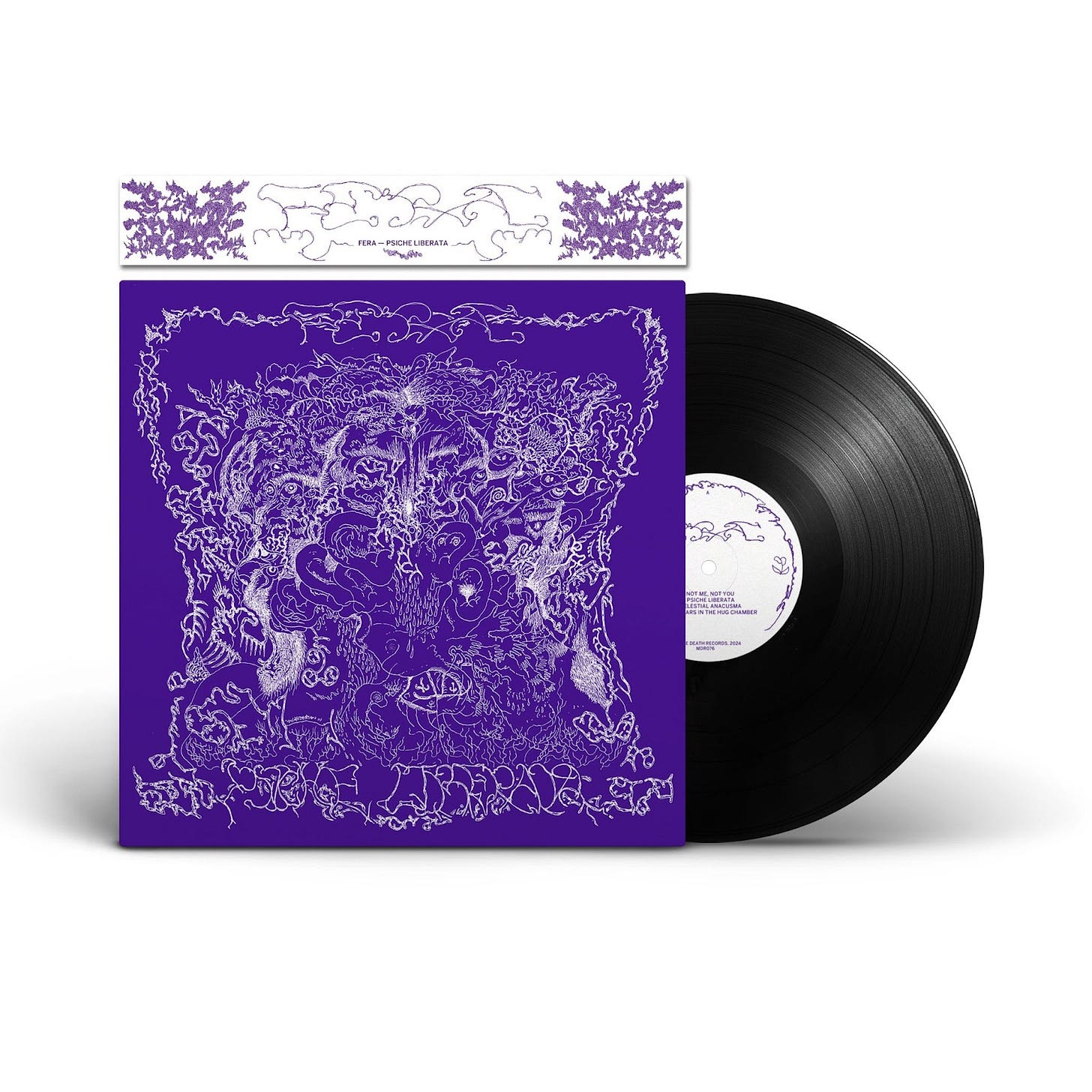An interesting chat with Fera, about his latest album and his comic.
A journey with the author of Psiche Liberata and La Caverna degli Abbracci.
Fera is Andrea De Franco, an electronic composer from Southern Italy who resides in Bologna. He is also known for his work as a visual artist/designer and member of the Undicesimacasa collective.
His musical cosmos is profound and imaginative, intergalactic atmospheres that condense fragmented IDM, scintillating textures, distorted synth-scapes, crunchy technoid rhythms and swirling abstractions that weave gently, sometimes moody and stark, more often celestial and awe-inspiring.
His latest studio work is “Psiche Liberata”, released by Maple Death Records. Mixed in Berlin by Steve Scanu, “Psiche Liberata” encapsulates Fera’s dense and intricate thought process, in contrast with his simple and direct approach to writing and recording that finds its more natural output in his rapturous live sets, where a mono signal runs through a few analogue pedals, transforming instantly into menacing alien grooves and fluid ecstasies.
Fera also published his debut comic, “La Caverna degli Abbracci”, for the acclaimed publishing house Canicola Edizioni this summer. It’s a microscopic odyssey in an unexplored universe of listening and restless thoughts where curiosity, adventure and discovery are at the heart of the reading experience. It is a surprising hybrid between comic and listening manual that starts from a single and paradoxical premise: "Don't look".
I chatted with Andrea to fully enter his world - read below:
You have this double artistic identity, a bit like Batman. How much effort does it take to release a record and a book at the same time?
The main reason for the simultaneous release was perhaps to break free of this schizophrenic "double" idea - batman is a perfect metaphor, he's basically nuts, but I always felt the two things going on hand in hand pretty naturally, there's no drawing without sound and vice versa, the struggle starts when I try to explain to people that I'm not a musician that also draws or a drawing artist that also plays music.
It was (and is) a lot of effort and definitely took a toll on me but it was worth it and it also sprouted in a fertile environment, cementing my relationship with Maple Death Records and Canicola Edizioni.
What role does your batcave, the Casetta del Custode della Montagnola, play in all of this?
The Casetta is the physical manifestation of the fertile environment I just mentioned. It changed a lot in the past few years, we started to collaborate on Eolica, a series of small events bringing together visual artists and weird musicians, I don't have my own studio there anymore, but I'm always here nonetheless working on my music, on comics, designs for Maple Death or Eolica, or some other weird thing.
Of course there's always some bureaucratic hassle but we're getting pretty good at slipping through the cracks. Also I grew up in the countryside and when I work at the Casetta I can stare at trees out of the window - do not underestimate this.
How do your album and your comic relate to each other?
They were done at the same time and came out of the same issues, troubles, interests. Sound-wise I am getting more and more primitive and simple in my approach, I'm minimizing the hardware, arrangements, songwriting. At the same time in my comics I ended up using just one pen, black ink and the simplest, cheapest paper available, trying to avoid excessive postproduction, coloring, layout.
Things happening around music are like 90% of my life and that of course flows into the comic. ”La Caverna degli Abbracci” has no characters, no dialogue, no plot. It's just sound and listening and exploring my personal relationship with it.
We already interviewed Clancy, he also linked his album to a comic. Is this becoming a distinctive feature of Maple Death?
Jonathan's latest record, “Sprecato”, is heavily linked to Michelangelo Setola's “Gli Sprecati” comic book. Even if they had no joined release each of them couldn't exist without the other. It was definitely inspirational even if I will never be as good as Michelangelo with drawing.
Anyway there's a peculiar weirdness going around here, “Sprecato” and “Psiche Liberata” are almost like prototypes, you'll have to keep in touch with Maple Death in the future and see what's gonna happen in the next few months (wink).
Why Psiche Liberata?
The title comes from a little diary entry by Ettore Sottsass, the acid architect/polymath of the Memphis group. In the entry he talks about something he thought visiting ancient temples in India, about how those temples were not places of psychic liberation through some ancient mysterious violent ritual, but more of a spatial manifestation of the insatiable hunger for our own impossible research of a psychic depth beyond words, unbearable like a itch, or a sexual urge.
Liberation is lotta continua (neverending struggle), not something to brag about when you happen to be with ten friends in a room and everyone agrees with each other. There's no shortcut around it, and the record comes out of this struggling confusion and intensity.
What are the musical and artistic references in general that we find in your works?
I started listening to music on my own when I was 8, so there's probably too much stuff to unpack there and it would be a boring list. The primitive approach I said before is probably the most important thing anyway, wether it's drone, dub, noise, ambient, synth punk or other weird sound influence, it comes from this idea of leaving the technicalities aside and bring some honesty and dedication to it.
Understanding what's important in life and relationships and making it resonate with my sound work. Other than the Maple Death artists I would also mention MyOwnPrivateRecords, Simple Music Experience, Moli del Tro, Pescheria, Avon Terror Corps, Canti Magnetici just to name a few... There's also a lot of influence from the outside, mainly from the unknown stuff that I listen to because of the Undicesimacasa collective, we're 5 DJs and musicians hosting parties or booking shows and there's always good stuff coming from there.
On the visual side there's a great deal of artists working with drawing in a similar honest, true-to-heart, obsessive way, and I also love those peculiar artists that lean on the outsider zone, like Agnes Martin, Lee Lozano, Bas Jan Ader, but also Chris Marker, Roland Topor, Lale Westvind, Paul Klee, Henri Michaux... it's really difficult to run it down to a short list!
Returning to the book, why that format?
It's a weird experiment that's been going on with Canicola for a while. These big comics are called Sudaca and the first ones were designed by Andrea Bruno, a great drawing and comic artist that works with intense puddles of pitch black ink.
When Canicola asked me for a comic book I immediately said I wanted to link it to a record and to do a Sudaca, mostly because I never worked with such a big format, it kind of reminded me of the vinyl size, and I also wanted to work with density, packing more stuff in less pages, while in the past I was diluting less action in more pages. I really like how it looks big and imposing while also being very lightweight and soft.
At the end of your book there is a long list of musical pieces, why this choice?
It's an incomplete list of albums I listened to a lot in the past year. When I do fanzines or short comics it's usually one, two days of work and I always write the records I was listening to in the zine's colophon. Being a longer work it turned out to be a bigger list, but everyday more albums come to mind that I forgot when I was working on that page.
I think we are in dire need of weird sources of music advice, I love finding this kind of advice outside of the algorithm or press suggestions, be it word of mouth, zines, friends, or a strange list in a strange comic, and I like to help.
Finally, can you give us a quick heads up on the current state of record labels and publishing? How do you fit into it, coming from self-production?
Self-publishing is a political statement and I try to work as much as possible with labels and publishers that share some of those notions, even if there's a necessary degree of compromise.
Publishing a record and a book together through two different although collaborating outlets has been my way to experiment or fuck with the status quo, trying to understand if there's some way to dodge all the bullshit that comes with the political interests and power structures that are inevitably part of our world and trying to focus on something substantial, to find something meaningful to say and to reach people that could find that stuff valuable.
There's much bigger stuff going on around and I always keep in mind that my work should not offer relief or distraction from the actual real struggle, but maybe can give us other stronger poetic instruments and tools to be able to be an active part in change and in the struggle for liberation.
Links:










